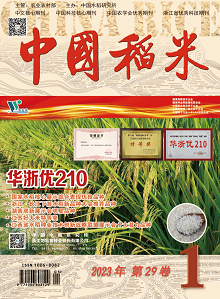Tobacco is an important economic crop in China. Continuous cropping, as the main cultivation method of tobacco, had the advantages of saving labor, labor time and production cost. However, long-term continuous cropping of tobacco would increase soil-borne diseases and insect pests, single weed community, decrease soil fertility and trace elements, and reduce the yield and quality of flue-cured tobacco. In addition, after the harvest of tobacco leaves in tobacco continuous cropping, the farmland was basically idle, resulting in a waste of land resources, aggravating the contradiction between tobacco and grain competition for land, and reducing the income of tobacco farmers. In view of the problems in tobacco continuous cropping cultivation, a comprehensive planting and breeding model of tobacco-rice rotation coupled with chicken and fish farming was proposed. In this mode, after the flue-cured tobacco is harvested, the rice was directly planted on both sides of the tobacco ridge, which realized no-tillage of the tobacco ridge and saved the cost of rice production. After the rice is planted, the shoulders of the ridges are kept moist and anhydrous, which is convenient for chickens to prey and move, and the ridge furrow is irrigated to facilitate the growth of rice and fish farming. Through the activities of chicken and fish in the rice field, diseases, pests and weeds in the field could be prevented and controlled, and the feces of chicken and fish could enrich the soil, which was conducive to reducing the amount of pesticides and fertilizers, thereby improving the farmland ecological environment, producing high-quality agricultural products such as rice, chicken and fish, significantly improving the economic benefits of rice planting, and achieving the dual goals of soil improvement in tobacco fields and income increase of tobacco farmers. In this paper, combined with the specific implementation of post-tobacco-rice rotation coupled chicken and fish farming, the technical points, comprehensive benefits and development prospects of the mode were discussed, in order to provide technical reference for the development of breeding under tobacco-rice rotation.

